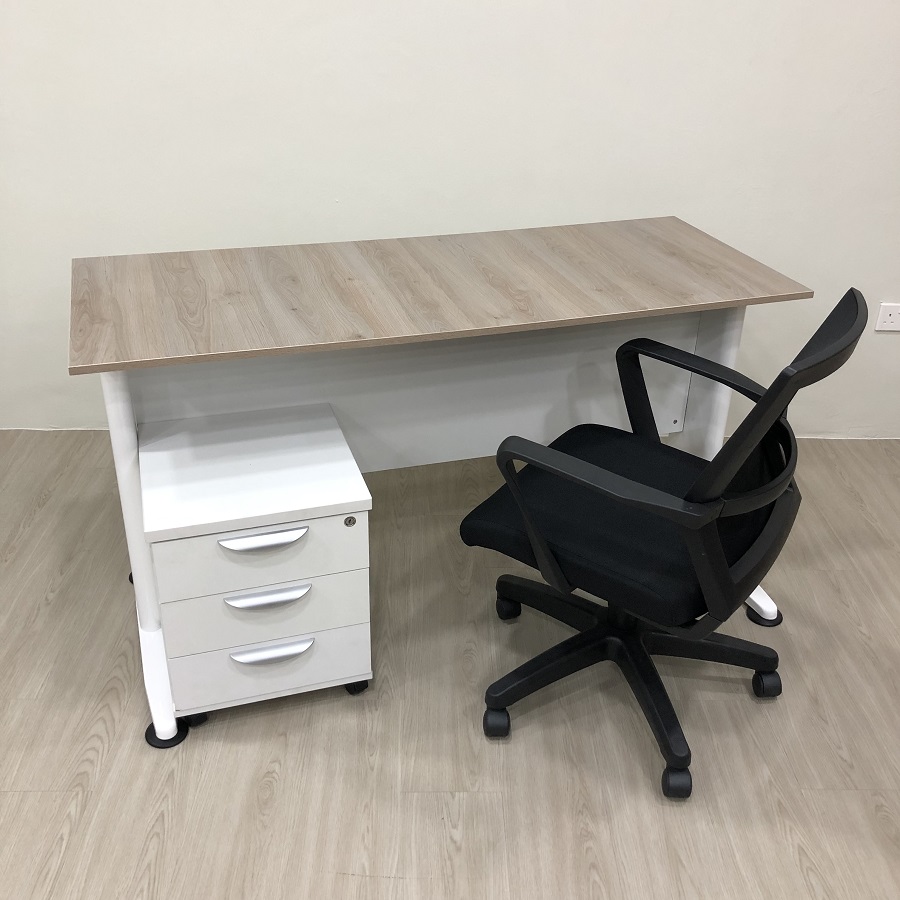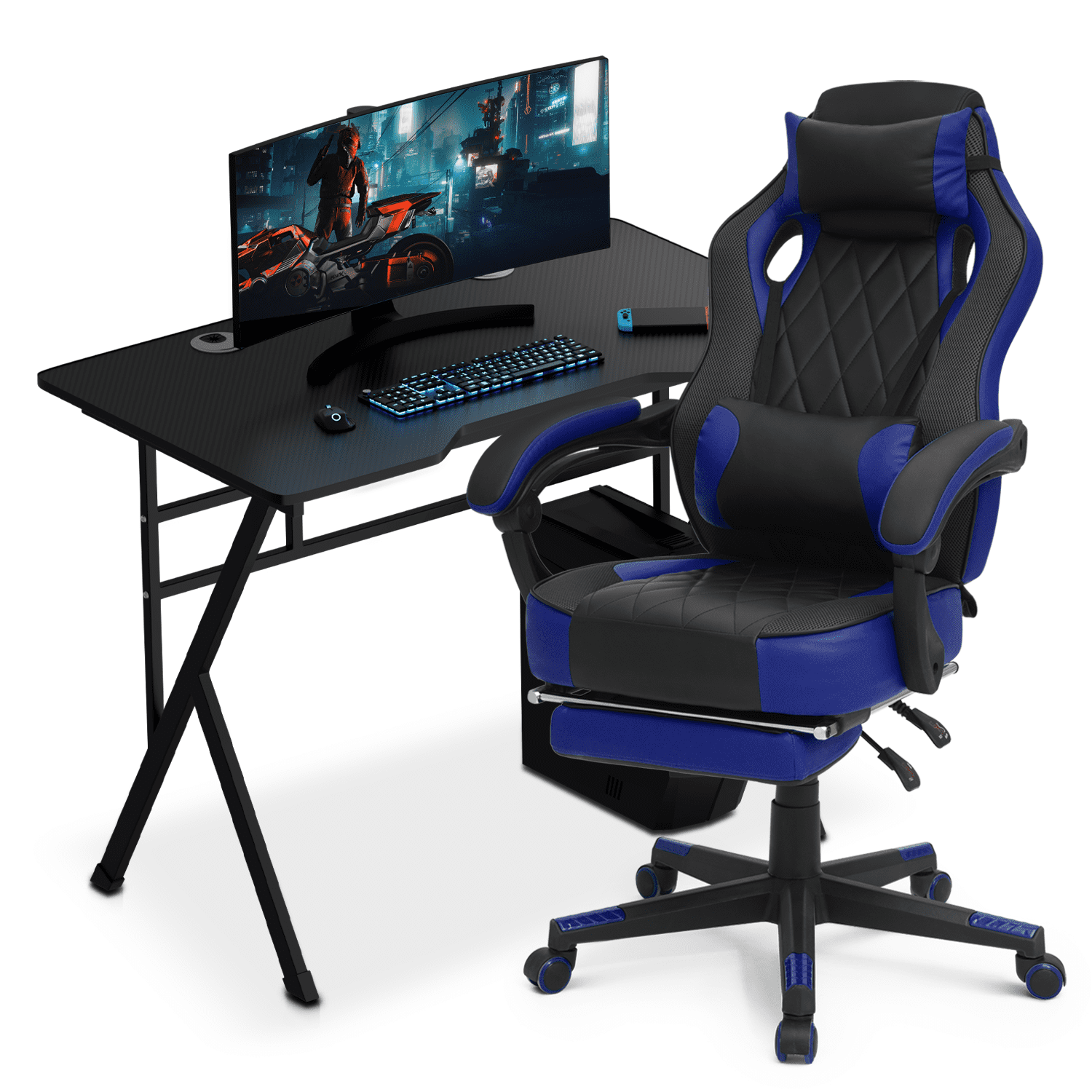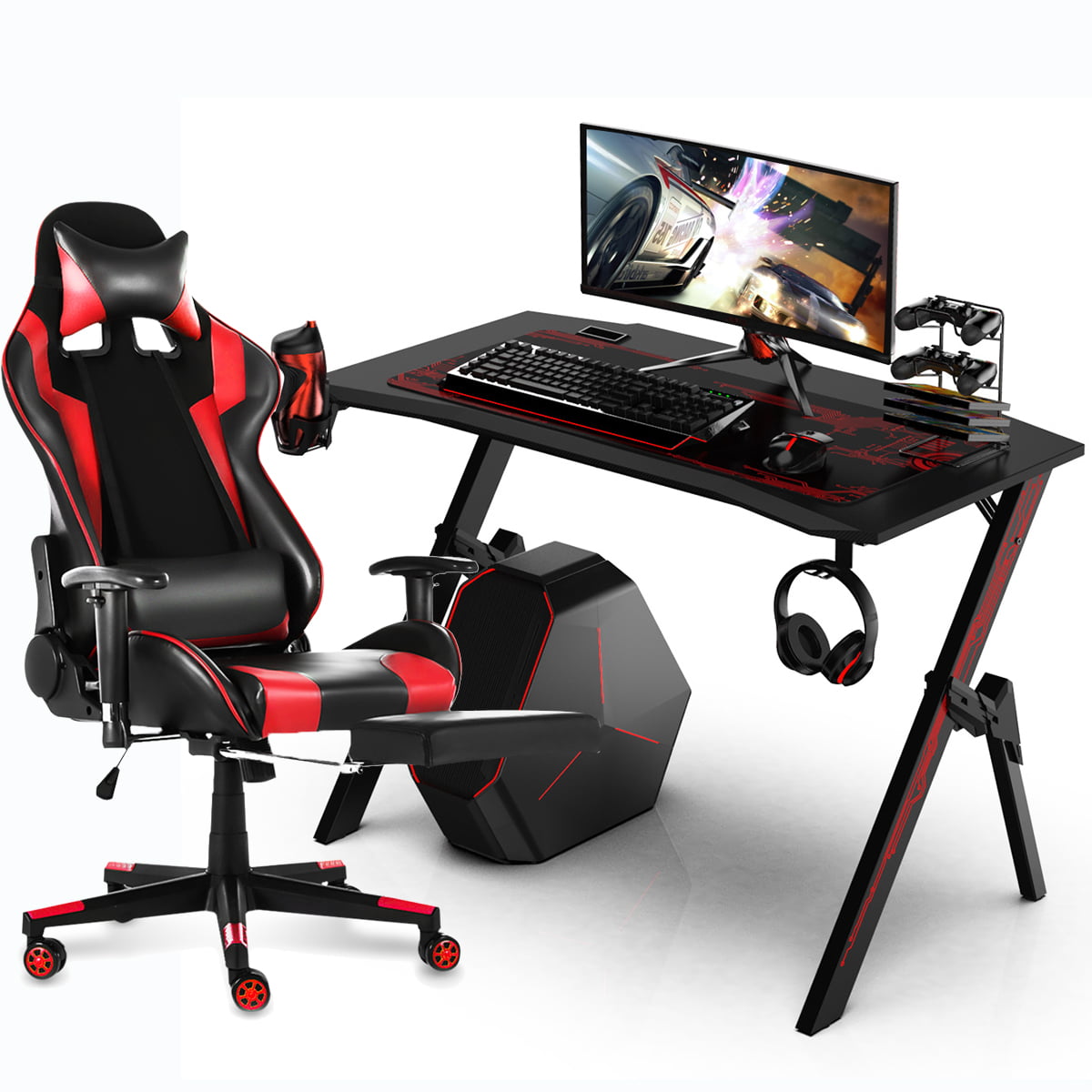The Importance of Ergonomics for Children: Children’s Computer Desk And Chair Set

In today’s digital age, children spend an increasing amount of time using computers, tablets, and other electronic devices. While technology offers numerous benefits, prolonged sitting and poor posture can lead to various health issues. This is where ergonomics comes into play, ensuring that children use technology comfortably and safely.
Ergonomic Features for Children’s Computer Desks and Chairs
A well-designed children’s computer desk and chair set can promote good posture and minimize the risks associated with prolonged sitting. These sets should incorporate features that adapt to a child’s growing body and support proper posture.
Adjustable Height
An adjustable height desk and chair allows children to customize their workspace to their specific height. This helps ensure that their feet are flat on the floor and their knees are bent at a 90-degree angle. A proper height setting promotes good posture and reduces strain on the back and neck.
Lumbar Support
Lumbar support is crucial for maintaining a healthy spine, especially during prolonged sitting. A chair with adjustable lumbar support allows children to adjust the backrest to fit the natural curve of their lower back. This helps distribute weight evenly and prevents slouching.
Armrests
Armrests provide support for the arms and shoulders, reducing strain and fatigue. Adjustable armrests allow children to find a comfortable position that supports their forearms and wrists.
Other Ergonomic Features
In addition to adjustable height, lumbar support, and armrests, other ergonomic features to look for in a children’s computer desk and chair set include:
- Footrest: A footrest provides support for the feet and helps maintain proper leg posture, reducing strain on the back and legs.
- Swivel Chair: A swivel chair allows children to easily turn and reach items on their desk, reducing unnecessary movement and strain.
- Durable and Comfortable Materials: The desk and chair should be made from durable and comfortable materials that can withstand regular use and provide adequate support.
Choosing the Right Size and Design

Selecting the right size and design for a child’s computer desk and chair is crucial for promoting good posture, comfort, and overall well-being. It’s essential to consider the child’s age, height, and individual needs when making these choices.
Measuring for the Right Fit
To ensure a comfortable and ergonomic setup, accurately measuring a child’s height is essential. Here’s how to do it:
- Have the child stand tall with their back straight and feet flat on the floor.
- Measure from the floor to the top of their head, ensuring the measuring tape is perpendicular to the floor.
- Record the measurement in centimeters or inches.
Once you have the child’s height, use this information to select a desk and chair that provides proper legroom, elbow height, and back support.
Exploring Design Options
Children’s computer desks and chairs come in a wide range of designs, materials, and colors.
Desk Designs
- L-shaped desks: Offer ample workspace and storage, ideal for children who need room for multiple activities.
- Corner desks: Space-saving options that fit well in smaller rooms, offering a dedicated workspace without taking up too much floor space.
- Standard desks: Classic rectangular desks provide a simple and functional workspace, perfect for children who need a basic setup.
Chair Designs
- Adjustable chairs: Allow for customization to fit a child’s height and posture, promoting comfort and proper ergonomics.
- Mesh chairs: Breathable and comfortable, ideal for long periods of use, reducing the risk of overheating or sweating.
- Ergonomic chairs: Designed with specific features like lumbar support and adjustable armrests to promote good posture and reduce strain on the back and neck.
Comparing Desk and Chair Designs
| Design Feature | Desk Design | Chair Design |
|—|—|—|
| Adjustability | L-shaped desks often offer adjustable shelves or drawers for personalized storage. Standard desks may have adjustable legs for height customization. | Adjustable chairs with height, backrest, and armrest adjustments offer the best customization for a growing child. |
| Durability | Solid wood or metal desks offer greater durability and longevity. | Sturdy frames and high-quality materials ensure the chair can withstand daily use and last longer. |
| Aesthetic Appeal | Various styles, colors, and finishes are available to match a child’s personality and room decor. | Vibrant colors, fun patterns, and unique designs can make the chair more appealing to children. |
Features and Functionality

A children’s computer desk and chair set should be more than just a place to sit and work. It should be designed to encourage organization, productivity, and a comfortable learning environment. This means incorporating features that cater to the specific needs of children, fostering good habits, and maximizing space utilization.
Storage Space
Adequate storage space is crucial for children’s desks, as it helps them keep their workspace organized and their belongings easily accessible. A well-designed desk should include various storage options to accommodate different items, such as:
- Drawers: Drawers provide secure storage for stationery, school supplies, and other smaller items. They can be categorized for easy access and organization. For example, a dedicated drawer for pencils, another for markers, and a third for notebooks.
- Shelves: Open shelves are ideal for storing larger items like books, folders, or decorative pieces. They allow children to display their favorite items and easily see what they need. A shelf can be designed for books, another for craft supplies, and a third for a small collection of toys or figurines.
- Cabinets: Cabinets offer concealed storage for items that need to be kept out of sight, such as electronics or personal belongings. They can also be used to store larger items that don’t fit on shelves or in drawers. For instance, a cabinet can be dedicated to storing laptops, headphones, and chargers, while another can hold art supplies or construction paper.
Cable Management
With the increasing use of technology in children’s learning, managing cables efficiently is essential. A well-designed desk should include features that help keep cables organized and out of sight, such as:
- Cable holes: Built-in cable holes in the desk surface allow for easy routing of cords and prevent them from becoming tangled. These holes can be strategically placed near the back of the desk or in the center, depending on the layout and the type of devices being used.
- Cable organizers: These can be integrated into the desk or purchased separately. They help bundle cables together, preventing them from cluttering the workspace. Cable organizers can be found in various forms, including clips, ties, and trays, providing flexibility in managing different cable types and sizes.
- Cable management trays: These trays are often located under the desk and offer a dedicated space for storing and organizing cables. They can be easily accessed when needed and help maintain a clean and clutter-free workspace.
Built-in Accessories
Some desks come with built-in accessories that enhance functionality and provide additional convenience for children. These accessories can include:
- Built-in pencil holders: These holders provide a dedicated space for pencils, pens, and other writing instruments, keeping them organized and easily accessible.
- Built-in cup holders: These holders are ideal for storing water bottles, juice boxes, or other beverages, preventing spills and keeping the desk surface clean.
- Built-in monitor stands: These stands elevate the monitor to an ergonomic height, promoting proper posture and reducing eye strain.
Design Considerations for Organization and Productivity
A well-designed desk and chair set can significantly impact a child’s productivity and organization. Key considerations for promoting these aspects include:
- Work surface size: The work surface should be large enough to accommodate all necessary items, such as a laptop, notebooks, and stationery, while providing ample space for working comfortably.
- Desk layout: The desk layout should be designed to encourage a logical flow of work, with dedicated areas for different tasks. For instance, one area can be designated for writing and reading, while another can be reserved for using a computer or drawing.
- Color and design: The color and design of the desk and chair should be appealing to children and create a positive learning environment. Bright colors and fun patterns can be motivating and stimulating, while neutral tones can promote focus and concentration.
Additional Accessories, Children’s computer desk and chair set
Several additional accessories can further enhance the functionality of a children’s computer desk and chair set. These include:
- Lighting: Proper lighting is essential for reducing eye strain and promoting focus. A desk lamp with adjustable brightness and color temperature can provide optimal lighting conditions for different tasks.
- Organizers: Organizers such as pencil holders, desk trays, and file folders can help keep the desk tidy and organized.
- Desk mats: Desk mats provide a protective layer for the desk surface and can also be used to create a dedicated workspace for specific activities.
Children’s computer desk and chair set – A child’s computer desk and chair set can be a haven for learning and creativity, but choosing the right colors can set the tone for their space. A vibrant splash of orange can invigorate the mind, and a kids desk chair orange can add a playful touch.
Remember, the desk and chair set should be a reflection of their personality, inviting them to explore and learn with joy.
A child’s computer desk and chair set, a seemingly simple piece of furniture, can hold a world of possibilities, each corner whispering secrets of imagination and learning. But for some children, the standard design can be a barrier, a source of frustration.
That’s where a special needs desk chair can truly make a difference, offering tailored support and comfort, unlocking the potential for every child to explore the digital world with ease and confidence. And as they navigate these new landscapes, the desk and chair become more than just furniture – they become companions, silent witnesses to the unfolding stories of childhood.